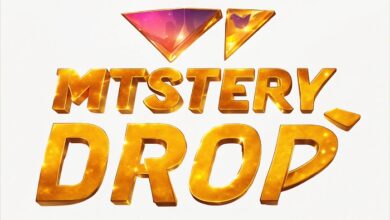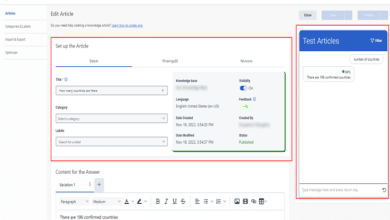Uploadarticle Au Blogspot: Boost Your Blog’s Visibility Today

Uploading articles on Blogspot can enhance your online presence. It’s a simple way to share your thoughts and ideas.
Blogspot, a popular platform by Google, allows users to publish content easily. Many people use it to share articles, stories, and tutorials. The process of uploading articles is straightforward, even for beginners. Whether you’re a writer, a business owner, or just someone with a passion to share, Blogspot can be a great tool.
This blog will guide you through the steps of uploading articles on Blogspot. It will also offer tips to make your posts more engaging and visible to your audience. Ready to start your blogging journey? Let’s dive in and explore how you can effectively use Blogspot to share your content with the world.

Credit: uploadarticle.net.au
Introduction To Uploadarticle
Welcome to the world of Uploadarticle. If you love writing and sharing your thoughts, this platform is for you. It is a great way to publish articles and reach a wide audience.
What Is Uploadarticle?
Uploadarticle is a user-friendly platform for writers. It allows you to publish articles on various topics. You can share your ideas, stories, and expertise with readers. This platform is easy to use and does not require technical skills.
Benefits Of Using Uploadarticle
- Wide Audience: Your articles can reach many readers around the world.
- Easy to Use: The platform is simple and intuitive, making it perfect for beginners.
- Free to Use: There are no costs involved in publishing your articles.
- SEO Friendly: Articles are optimized for search engines, improving your visibility.
- Community Support: Engage with a community of writers and readers who share your interests.
Setting Up Your Blogspot Blog
Starting a blog on Blogspot is easy and fun. Blogspot is user-friendly and perfect for beginners. In this section, we will guide you through setting up your Blogspot blog. Follow these steps to create and customize your Blogspot blog effortlessly.
Creating A Blogspot Account
First, you need to create a Blogspot account. Follow these steps:
- Go to Blogger.
- Click on the “Create Your Blog” button.
- Sign in with your Google account. If you don’t have one, create it first.
- After signing in, click “Create New Blog”.
- Enter your blog title and choose a unique URL.
- Select a template that suits your style.
- Click “Create Blog” to finish the setup.
Congratulations! You have created your Blogspot account. Now, let’s move on to customization.
Customizing Your Blog
Customization makes your blog unique. Here’s how to customize your Blogspot blog:
- Layout: Go to the “Layout” section. Drag and drop elements to arrange your blog layout.
- Theme: Choose a theme that matches your content. Go to the “Theme” section, select a theme, and click “Apply”.
- Gadgets: Add gadgets for more functionality. Go to “Layout”, click “Add a Gadget”, and choose from the options available.
- Pages: Create pages like “About” and “Contact”. Go to “Pages”, click “New Page”, and fill in the details.
- Settings: Adjust settings to enhance your blog. Go to “Settings” and customize options like privacy and comments.
With these customization options, your Blogspot blog will stand out. Happy blogging!
Connecting Blogspot With Uploadarticle
Connecting Blogspot with Uploadarticle can elevate your blogging experience. It allows you to streamline content creation and publication. This integration ensures that your articles reach a wider audience efficiently.
Integration Steps
To connect Blogspot with Uploadarticle, follow these steps:
- Log in to your Blogspot account.
- Navigate to the dashboard and select your blog.
- Click on “Settings” in the left sidebar.
- Scroll down to the “Other” section.
- Find the “Import & backup” option and click “Back up Content”.
- Save the backup file to your computer.
- Log in to your Uploadarticle account.
- Go to the “Import Blog” section.
- Upload the backup file from your computer.
- Follow the on-screen instructions to complete the import process.
Troubleshooting Common Issues
Encountering issues during the integration process? Here are some common problems and solutions:
| Issue | Solution |
|---|---|
| Backup file not uploading | Ensure the file size is within the allowed limit. Try a different browser. |
| Import process stuck | Check your internet connection. Refresh the page and try again. |
| Formatting issues | Manually adjust the formatting in Uploadarticle after importing. |
By following these steps and solutions, you can successfully connect Blogspot with Uploadarticle. This integration simplifies your blogging process, making it easier to manage and distribute content.
Crafting Engaging Blog Content
Crafting engaging blog content is crucial for attracting and retaining readers. Your blog posts should be interesting, informative, and well-written. A well-crafted post keeps readers coming back for more. Here are some strategies to help you create engaging content for your blog.
Choosing The Right Topics
Choosing the right topics is the first step. Focus on what interests your audience. Use keyword research tools to find popular topics in your niche. Look at what your competitors are writing about. This can give you ideas for your own posts.
Consider your audience’s needs and preferences. Are they looking for tutorials, news, or opinion pieces? Make a list of potential topics. Prioritize those that are most relevant and timely. This increases the chance of your content being shared.
Writing Compelling Posts
Writing compelling posts requires a mix of creativity and structure. Start with a strong headline. It should be clear and captivating. Your introduction should grab the reader’s attention. Use a question or a bold statement.
Break your content into short paragraphs. Use bullet points or numbered lists where appropriate. This makes your content easier to read. Include images or videos to make your post visually appealing.
Use simple language. Avoid jargon or complex sentences. Write as if you are speaking to a friend. This makes your content more relatable.
Here is a simple structure to follow:
| Element | Description |
|---|---|
| Headline | A catchy title that grabs attention |
| Introduction | A brief overview of what the post will cover |
| Main Content | The bulk of the post, broken into sections |
| Conclusion | A summary or call to action |
Finally, proofread your post. Check for spelling and grammar errors. A well-written post reflects your professionalism. Crafting engaging blog content takes time and effort, but it is worth it.
Optimizing Your Blog For Seo
Optimizing your blog for SEO is crucial for increasing your online visibility. A well-optimized blog attracts more visitors and improves your ranking on search engines. This section will guide you through essential SEO strategies to enhance your blog on Uploadarticle Au Blogspot.
Keyword Research
Keyword research is the foundation of SEO. Start by identifying the terms your audience uses when searching for information. Use tools like Google Keyword Planner or Ubersuggest to find relevant keywords.
- Choose keywords with high search volume but low competition.
- Focus on long-tail keywords as they are more specific.
- Include keywords naturally in your content.
On-page Seo Techniques
On-page SEO involves optimizing individual pages to rank higher. Here are key techniques:
- Title Tags: Ensure your titles are compelling and include your main keyword.
- Meta Descriptions: Write concise descriptions that contain keywords and entice clicks.
- Header Tags: Use header tags (H1, H2, H3) to structure your content and include keywords.
- Internal Linking: Link to other relevant posts on your blog to keep readers engaged.
- Image Optimization: Use alt tags with keywords for all images.
Implementing these on-page SEO techniques can significantly improve your blog’s performance.
Promoting Your Blog Effectively
Creating engaging content is just one part of blogging. Promoting it effectively is crucial to reach a wider audience. By using smart strategies, you can boost your blog’s visibility. This section covers key promotion tactics.
Social Media Strategies
Social media is a powerful tool for blog promotion. Share your posts on platforms like Facebook, Twitter, and LinkedIn. Use catchy titles and images to grab attention. Engage with your audience by responding to comments and messages. Post regularly to keep your followers interested.
Join relevant groups and communities. Share your blog posts there, but avoid spamming. Instead, contribute to discussions and provide valuable insights. This builds trust and encourages people to visit your blog. Use analytics tools to track your social media performance. Adjust your strategies based on what works best.
Building An Email List
Building an email list is essential for blog promotion. Offer a valuable incentive like a free e-book or exclusive content. Encourage visitors to subscribe to your newsletter. Send regular updates to keep your audience engaged.
Personalize your emails to make them more appealing. Address your subscribers by their names. Share your latest blog posts and other interesting updates. Include clear calls to action to guide your readers. Use email marketing tools to manage your list and track performance.
Segment your email list based on interests. This allows you to send more targeted content. A well-maintained email list can drive consistent traffic to your blog.
Analyzing Blog Performance
Understanding your blog’s performance can help you make better decisions. It allows you to see what works and what doesn’t. This can lead to more readers and higher engagement. One of the best tools for this is Google Analytics.
Using Google Analytics
Google Analytics is a free tool. It provides detailed insights into your blog’s performance. First, you need to set up an account. Link your blog to Google Analytics. Once linked, you can access a wealth of data.
Check the number of visitors to your blog. See how long they stay. Look at which posts are most popular. These insights can guide your content strategy. They help you understand what your readers like.
Understanding Key Metrics
There are several key metrics to focus on. Pageviews show how many times your blog has been viewed. Unique visitors indicate the number of individual users. Bounce rate shows the percentage of visitors who leave after viewing one page.
Session duration tells you how long visitors stay on your blog. High session duration means they find your content engaging. Conversion rate measures how many visitors take a desired action. This could be signing up for a newsletter or leaving a comment.
By understanding these metrics, you can improve your blog. Focus on creating content that keeps readers engaged. Aim to lower your bounce rate. Work to increase your session duration and conversion rate. Regularly review your analytics to track your progress.
Monetizing Your Blog
Monetizing your blog can be a rewarding venture. It allows you to earn from your passion. Several methods exist to generate income from your blog. This section will explore two effective ways.
Affiliate Marketing
Affiliate marketing is a popular monetization method. You promote products or services on your blog. When readers purchase through your links, you earn a commission. It’s simple to start. Choose products relevant to your blog’s niche. Write honest reviews and include affiliate links. This can build trust with your audience. Use clear call-to-actions to encourage clicks. Track your performance to see what works best.
Sponsored Posts
Sponsored posts offer another revenue stream. Brands pay you to write about their products. Ensure the content aligns with your blog’s theme. Transparency is key. Disclose sponsored content to your readers. This maintains trust and credibility. Negotiate fair rates for your work. Create engaging and informative posts. This benefits both the brand and your readers.
Staying Updated With Blogging Trends
Blogging is always changing. New trends emerge. Old ones fade. It’s crucial for bloggers to stay updated. Why? It keeps your content relevant. It helps attract more readers. And it keeps you ahead of the competition. Here’s how you can stay updated with blogging trends.
Following Industry Leaders
Industry leaders set trends. They are often the first to adopt new methods. Follow them. Subscribe to their blogs. Follow their social media channels. Watch their videos. This keeps you informed about the latest trends.
| Platform | Action |
|---|---|
| Blogs | Subscribe to newsletters |
| Social Media | Follow industry leaders |
| YouTube | Watch trend-related videos |
Adapting To Changes
Change is constant in blogging. Algorithms change. Reader preferences change. Adapt to these changes. Test new strategies. See what works. Then apply it to your blog. Experiment with new content types. Try videos. Try infographics. Try podcasts.
- Test new blog formats
- Use analytics to measure success
- Adapt content based on feedback
Staying updated with trends is not just about following. It’s about adapting and evolving. This makes your blog dynamic. And it keeps readers engaged.

Credit: m.facebook.com
Frequently Asked Questions
How To Upload Articles On Blogspot?
Uploading articles on Blogspot is simple. Log in, click ‘New Post’, write your content, and hit ‘Publish’.
Can I Schedule Posts On Blogspot?
Yes, you can schedule posts on Blogspot. Use the ‘Schedule’ option to set your preferred date and time.
Is Blogspot Free To Use?
Yes, Blogspot is completely free to use. It offers various templates and customization options at no cost.
How To Customize My Blogspot Blog?
To customize, go to ‘Theme’, choose a template, and adjust settings. Use ‘Layout’ for more detailed customization.
Conclusion
Uploading articles on Blogspot can be straightforward and rewarding. Engage your audience with quality content. Keep your posts regular and relevant. Add visuals to enhance your articles. Respond to comments to build a community. Use SEO techniques for better visibility.
Track your progress with analytics tools. Stay consistent and patient. Your efforts will pay off over time.





